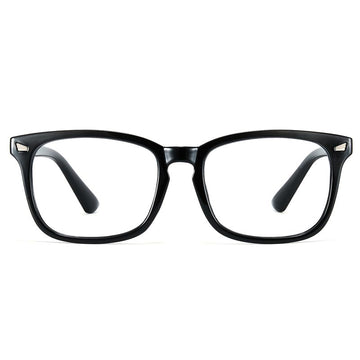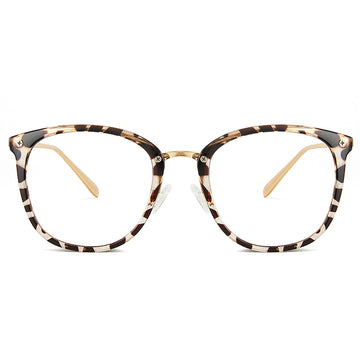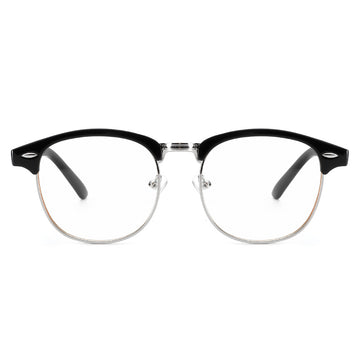Prescriptions (Rx) FAQ
Your pupillary distance (PD) is the measurement of the distance between your pupils.

This is needed for the manufacturer of the eyeglasses to know where to place the optical center on each lens, so you can see well with the glasses.
Am I a single PD or dual PD?
A single PD it is the measurement, in millimeters, from the center of one pupil to the center of the other.

A dual PD is the measurement of the center of each pupil to the center of the bridge of your nose.

Your Rx is what an ophthalmologist (an MD) or optometrist (a doctor of optometry) provides to correct your vision with a pair of eyeglasses with corrective lenses.

(You need an Rx written specifically for eyeglasses; an Rx for contact lenses will not work for eyeglasses!)
An Rx will have horizontal rows or vertical columns. The top row or first column will always be for the right eye, abbreviated as OD. The second row or column will always be for the left eye, abbreviated as OS.
Each row of an Rx has three main sections: Sphere (SPH), Cylinder (CYL), and AXIS. The SPH section corrects nearsighted or farsighted vision. The CYL and AXIS sections correct an astigmatism.
There may also be a fourth section on the Rx , NV-ADD (for Near Vision-Reading ADDition), which could be used to order a pair of bifocal or progressive glasses with a close-up vision section in the bottom part of the lens.
The SPH, CYL, and NV-ADD numbers will always have a plus or minus sign.
Here is a list of some optical abbreviations that will help you order your glasses from Cyxus:
ADD (also NV-ADD): the Near Vision (NV) Reading ADDition correction on a multifocal Rx. Can be used for bifocal or progressive glasses, or for single-vision reading or computer (intermediate) vision glasses.

AR: Anti-Reflective. A coating that reduces reflection on the lenses.
AXIS: the angle at which the Cylinder (CYL) is placed on a lens to correct an astigmatism. It ranges from 1 to 180.
BAL: the Rx calls for balance lenses, meaning the same Rx for each eye. Often used when a person has no sight in one eye, so both lenses will have the same thickness.
BD, BI, BO, BU: a prism correction on your Rx (may be indicated with Δ, and one of these four abbreviations. The B stands for base, and it could be base down (BD), base in (BI), base out (BO), or base up (BU).
CYL: the Cylinder. Combined with the AXIS, the CYL corrects an astigmatism.
DS: the abbreviation for diopter simplex. An eye dr. may write DS on an Rx in the Cylinder (CYL) field if no astigmatism correction is needed.
DV: distance vision.
FT: flat-top bifocal.
NV: near vision.
NV-ADD (also ADD): the Near Vision (NV) Reading ADDition correction on a multifocal Rx. Can be used for bifocal or progressive glasses, or for single-vision reading or computer (intermediate) vision glasses.
OD: Latin for Oculus Dexter, meaning the right eye.
OS: Latin for Oculus Sinister, meaning the left eye.
OU: Latin for Oculus Uterque, meaning each eye.
PAL: Progressive Addition (or Adjustment) Lens: sometimes on a Progressive Rx an eye dr. will write two different numbers for the NV-ADD, perhaps +2.25 and +2.50, to increase the reading power in the NV-ADD for Progressive lenses.
PD (Pupillary Distance): the PD is the measurement of the distance between your pupils. This is needed for the manufacturer of the eyeglasses to know where to place the optical center on each lens, so you can see well with the glasses.
PL: Plano. Latin for "flat." If this is in the SPH section of an Rx, it means no nearsighted or farsighted correction is needed.
RX: a prescription.
SPH: the first section on an Rx. It corrects nearsighted or farsighted vision.
UV: the abbreviation of ultraviolet. UV light is invisible to the human eye, but it is UV light that gives us a sunburn, and too much exposure to it can damage the eye. All of the lenses Cyxus offers come with 100 percent UV protection, for free.
VA: Visual acuity: how well the eye can see. Sometimes this may be written on an Rx, with a number such as 20/20. This would indicate that with eyeglasses made to this Rx, the vision would be corrected to 20/20 vision.
You bet we can!
Single-vision Rx:
Up to -20.00 or +12.00 on the Sphere (SPH
Up to + or - 6.00 on the Cylinder (CYL).
Bifocal Rx:
Up to -9.00 or +6.00 on the SPH.
Up to + or - 6.00 on the CYL.
Up to +3.50 on the NV-ADD.
Progressive Rx:
Up to -10.00 or +8.00 on the SPH.
Up to + or - 6.00 on the CYL.
Up to +3.50 on the NV-ADD.
Prism (single-vision only):
Up to 5.00 in any base direction.
Most people have an astigmatism. If you have an astigmatism on your Rx, we can make glasses that will correct it.
If you do not receive your parcel within this period of time, please do not hesitate to contact us.
Currently we don’t offer them on them on the website, but please contact alice@cyxus.com if you want us to make custom bifocal or progressive lenses for you!

At the same time, there is less need for a high index if you have a very low prescription. If you are already at -2.00 diopters or less, spending the extra money will make no noticeable difference for you. A mid index 1.57 is plenty in this -2.00 diopter scenario.
Once you get close to -5.00 diopters, moving the index higher to a 1.61 is a good idea, if it fits your budget.
From there, if you have a prescription over -6.00 diopters, a 1.67 high index lens is a worthwhile upgrade. It is with those thicker lenses at higher prescriptions, that we start to experience optical distortion that is notable when wearing that correction for many hours every day.
Optical distortion, increasing as you increase prescription strength, adds unwanted eye strain.
At -8.00 diopters or more, you will want to spend the extra, and go all the way to a 1.71 high index.











